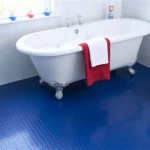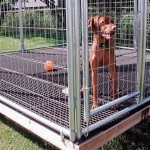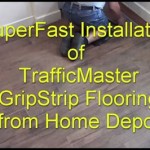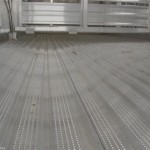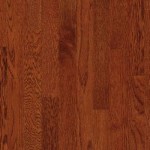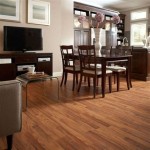How To Install Wood Flooring On Particle Board
Installing wood flooring over particle board, while not always the ideal scenario, is a common practice in many construction and renovation projects. Particle board, also known as chipboard, is a composite material made of wood chips and resin, often used as a subfloor. Successfully installing wood flooring on top of particle board requires careful preparation, appropriate materials, and adherence to specific techniques to ensure a stable and long-lasting floor. The success of this installation hinges on the condition of the particle board and the specific type of wood flooring being used. Understanding these factors is paramount to a satisfactory outcome.
Before commencing any installation, it is crucial to assess the existing particle board subfloor. This assessment will dictate the necessary steps to take and whether the installation is even feasible. Key considerations include the thickness of the particle board, its structural integrity, and its levelness. Addressing these factors will mitigate potential problems down the line, such as squeaking, unevenness, and premature wear of the wood flooring.
Assessing the Particle Board Subfloor
The initial step involves a thorough visual inspection of the particle board. Look for signs of water damage, such as staining, swelling, or crumbling. Water damage weakens the particle board and compromises its ability to properly support the wood flooring. Any compromised areas must be addressed before proceeding. If the damage is extensive, replacing the affected sections of particle board is the best course of action. Small, localized areas of damage may be repaired with a wood filler specifically designed for particle board, but this is generally a temporary solution and may not provide adequate long-term support.
Next, evaluate the thickness of the particle board. Generally, particle board used as a subfloor should be at least 5/8 inch thick, ideally 3/4 inch, to provide sufficient support for wood flooring. Thinner particle board may deflect excessively under load, leading to problems with the wood flooring, such as buckling or cracking. If the particle board is too thin, adding a layer of plywood on top can increase its thickness and rigidity. This plywood layer should be at least 1/4 inch thick and attached securely to the existing particle board using screws.
Levelness is another critical factor. Use a long level (at least 6 feet) to check for any dips or high spots in the subfloor. Minor imperfections (less than 1/8 inch over 6 feet) can often be addressed with self-leveling compound. For larger variations, it may be necessary to sand down high spots or fill in low spots with shims or patching compound. A perfectly level subfloor is essential for a professional-looking and structurally sound wood floor.
Finally, check for loose or squeaky areas. These are often indicators of loose fasteners or inadequate support. Secure any loose particle board panels by driving screws through them and into the floor joists below. Use screws that are long enough to penetrate the joists by at least 1 inch. If squeaking persists, it may be necessary to add additional support between the joists or replace the affected section of particle board.
Preparing the Particle Board for Installation
Once the particle board subfloor has been thoroughly assessed, the next step is to prepare it for the installation of the wood flooring. This involves cleaning, leveling, and potentially adding a vapor barrier to protect the wood from moisture. Proper preparation is crucial for ensuring a strong bond between the subfloor and the wood flooring, as well as preventing moisture-related problems.
Begin by thoroughly cleaning the particle board surface. Remove any dust, dirt, debris, or adhesive residue that may be present. A vacuum cleaner with a brush attachment is ideal for this purpose. For stubborn residue, use a scraper and a mild cleaning solution. Ensure the surface is completely dry before proceeding to the next step. Dust and debris can interfere with the adhesion of the flooring adhesive or underlayment, leading to a weakened bond and potential future problems.
Addressing any remaining unevenness is the next priority. As mentioned earlier, minor imperfections can be corrected with self-leveling compound. Follow the manufacturer's instructions carefully when applying this compound. For larger dips or high spots, consider using a floor patching compound or shims. Ensure that the patching compound is compatible with particle board and that the shims are securely fastened to the subfloor.
A vapor barrier is often recommended, especially if the particle board is located over a crawl space or basement. This barrier helps prevent moisture from migrating up into the wood flooring, which can cause warping, cupping, or mildew growth. A 6-mil polyethylene film is a common choice for a vapor barrier. Overlap the seams by at least 6 inches and tape them securely with moisture-resistant tape. Extend the vapor barrier up the walls a few inches and trim it off after the flooring is installed.
After the vapor barrier is in place, consider installing an underlayment. An underlayment provides additional cushioning, sound insulation, and can help smooth out minor imperfections in the subfloor. There are various types of underlayment available, including foam, cork, and rubber. Choose an underlayment that is compatible with the type of wood flooring being installed and that meets the manufacturer's recommendations. Secure the underlayment to the particle board using staples or adhesive, following the manufacturer's instructions.
Choosing the Right Wood Flooring and Installation Method
Selecting the appropriate type of wood flooring and installation method is critical for a successful installation over particle board. Not all types of wood flooring are suitable for this type of subfloor, and the chosen installation method must account for the specific characteristics of particle board. Solid hardwood, for instance, is generally not recommended for installation directly over particle board due to its susceptibility to moisture and its tendency to expand and contract. Engineered hardwood, on the other hand, is a more stable option and is often a better choice for this application.
Engineered hardwood flooring consists of a thin layer of hardwood veneer bonded to a core of plywood or fiberboard. This construction makes it more resistant to moisture and less prone to warping than solid hardwood. When selecting engineered hardwood, choose a product with a thick wear layer (at least 2mm) to ensure durability. The thickness of the overall board also matters, ensure it's suitable for the expected traffic and load.
The installation method is equally important. There are three primary methods for installing wood flooring: nailing, gluing, and floating. Nailing is generally not recommended for particle board, as particle board does not hold nails as well as plywood or solid wood. Gluing is a viable option, but it requires careful preparation of the subfloor and the use of a high-quality adhesive specifically designed for wood flooring and particle board. The adhesive must be applied evenly and in accordance with the manufacturer's instructions.
The floating method is often the most practical option for installing wood flooring over particle board. This method involves assembling the flooring planks together without attaching them directly to the subfloor. The flooring is essentially "floating" on top of the subfloor, allowing it to expand and contract freely. Floating floors typically use a click-lock system, where the planks interlock with each other. This method is relatively easy to install and does not require the use of nails or adhesive.
When installing a floating floor, it is essential to leave an expansion gap around the perimeter of the room. This gap allows the flooring to expand and contract without putting pressure on the walls. The size of the expansion gap will vary depending on the type of flooring and the size of the room, but it is typically around 1/4 to 3/8 inch. This gap will later be covered by baseboards or quarter-round molding.
Regardless of the chosen installation method, it is crucial to follow the manufacturer's instructions carefully. These instructions will provide specific guidance on the proper techniques to use, the recommended materials, and any precautions that should be taken. Deviating from the manufacturer's instructions can void the warranty and may result in a failed installation.
Proper acclimation of the wood flooring is also crucial, particularly when installing over particle board. This involves allowing the flooring to sit in the room for several days before installation, allowing it to adjust to the room's temperature and humidity. This helps to minimize expansion and contraction after installation, reducing the risk of problems such as buckling or gapping.
Finally, consider the room's environment. High humidity or moisture levels can negatively impact the longevity and performance of wood flooring installed over particle board. Addressing any moisture issues before installation, such as fixing leaks or improving ventilation, is crucial. Maintaining a stable and dry environment will help ensure the wood flooring remains beautiful and functional for years to come.

Solid Hardwood Flooring Installation Method Over Particleboard

Installing Hardwood Flooring Over Particleboard Magnus Anderson

Particle Board As A Flooring Solution

How To Install Lock Engineered Hardwood Flooring

You Cant Install Hardwood On Particleboard Here S What Need To Do

How To Prevent Flooring Problems Prior Installation

Real Wood Floors Made From Plywood

How To Install Wood Flooring Diy Made Easy Esb

How To Install Lock Engineered Hardwood Flooring

Hybrid Timber Laminate Flooring Installation Comprehensive Guide
Related Posts

